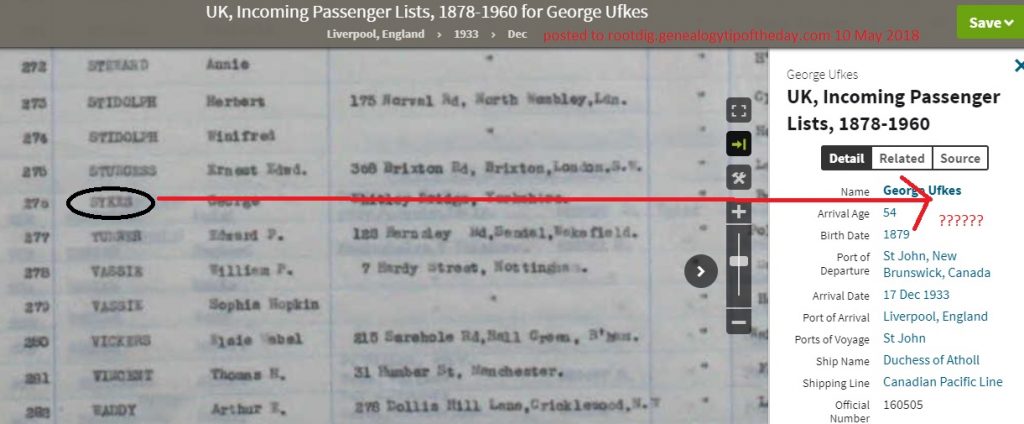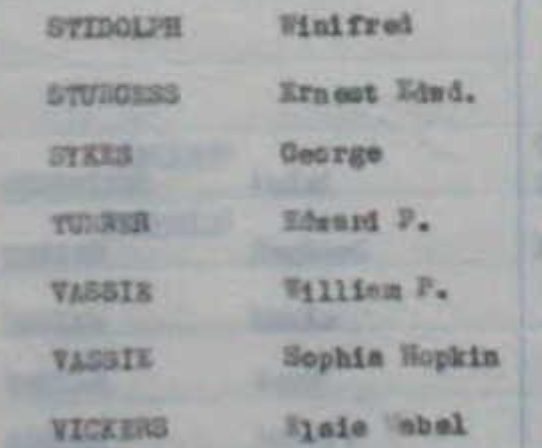I search for a few of my unusual names in just about any database. It is a great way to find new people and take advantage of the unusual names that can be frustrating in so many other ways. It apparently is a great way to get fodder for blog posts.
This time my search for an unusual name also suggested something about how Ancestry.com possibly indexes their records. Possibly. The last name of Ufkes is highly unusual. It is not a name one thinks of seeing in a record unless one is familar with it–particularly when those records are typed and partially alphabetical in nature.
That makes all the more unusual for it to appear as a transcription error. It’s not a name that immediately comes to mind if there is a name one cannot read. The only genealogists who see Ufkeses everywhere are ones who are actively looking for them. And…there are not all that many of us.
And yet, Ancestry.com has a George Ufkes listed in the “UK, Incoming Passenger Lists, 1878-1960.” It’s clearly not George Ufkes.
It’s George Sykes.
I’m not certain if transcription for these records was done by actual humans or by some sort of process based on optical recognition.
If it was done by machine, it makes it clear that common sense has not been programmed into the process. The names are alphabetical on this list. The supposed “Ufkes” entry appears towards the end of the entries beginning with the letter “S.” If a machine transcribed the names it was not programmed to “look for” patterns or trends in the data and use those trends to increase the accuracy of the transcription. Machine transcription is based upon statistical algorithms that interpret where there is “ink” and where there is not and what letters certain “ink splotches” usually represent.
If the indexing was done by a machine, the machine was not looking for any “patterns” in the name.
That’s what a thinking human should do given the alphabetical nature of these names.
Maybe the entry looked more like “Ufkes” to the computer algorithm than it did “Sykes” based upon the ink splotches picked up by the digital scanner.
And if the transcription was done manually…
Seeing the name makes me wonder just how the procedure for the transcription process at Ancestry.com works when transcriptions are done by humans and not by machine. If the transcription is done by humans filling in fields in a database (which it should be), does the screen prompt the transcriber for a name once they have entered a few letters in the box much like how Ancestry.com search boxes prompt users with name suggestions when a few letters have been entered? That could explain some data entries in Ancestry.com databases.

The name clearly is Skyes.

I’m not certain how the index was created. But it just tickles me that someone took a relatively common name such as Sykes and thought it was a relatively uncommon name like Ufkes.
And here I thought I was the only one who saw Ufkeses where there were none.

No responses yet